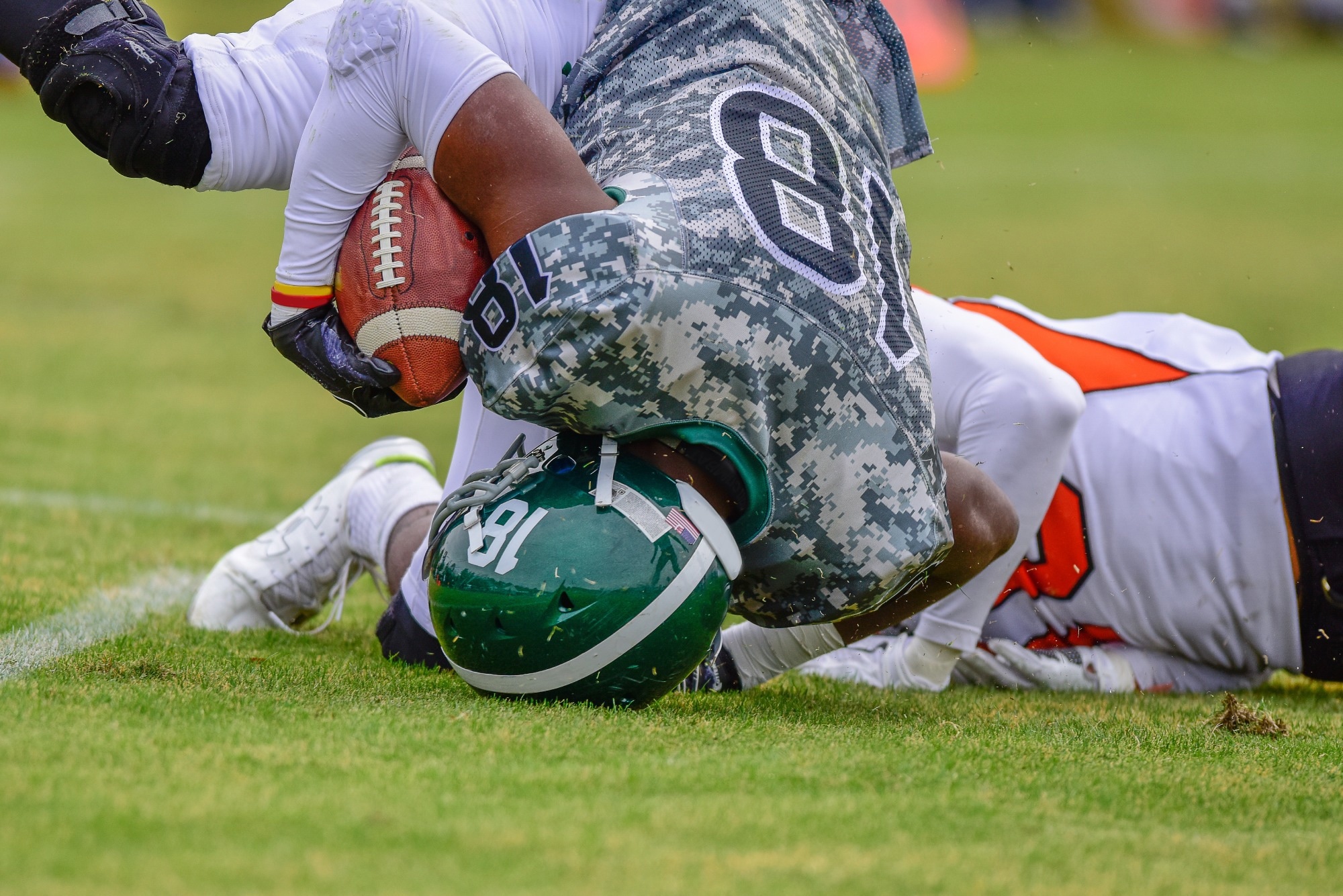In a recent study published in JAMA Neurology, researchers characterized the neuropathological and clinical symptoms of chronic traumatic encephalopathy (CTE) among young brain donors exposed to repetitive head impacts (RHIs) while engaging in contact sports.
 Study: Neuropathologic and Clinical Findings in Young Contact Sport Athletes Exposed to Repetitive Head Impacts. Image Credit: Margaret Kite/Shutterstock.com
Study: Neuropathologic and Clinical Findings in Young Contact Sport Athletes Exposed to Repetitive Head Impacts. Image Credit: Margaret Kite/Shutterstock.com
Several individuals are exposed to RHIs globally by participating in collision and contact sports, military duty, and behaviors such as physical violence. RHIs can cause symptomatic concussions and the far more common asymptomatic non-concussive injuries.
Long-term RHI exposure may result in chronic neuropsychiatric and cognitive symptoms, as well as progressive tau protein-based neurodegenerative disorders like CTE. Emerging evidence indicates structural white matter abnormalities on magnetic resonance imaging in young, active, and recently retired contact sports participants exposed to RHI, albeit the pathologic state causing these changes is unknown.
About the study
In the present study, researchers assessed clinical and neuropathological features of RHI-induced CTE among young and deceased contact sports athletes.
The team analyzed data from 152 brain donor individuals aged below 30 years at the time of death and underwent brain donation procedures between 1 February 2008 and 31 September 2022. Donors were identified from the Understanding Neurologic Injury and Traumatic Encephalopathy (UNITE) Brain Bank. Data were analyzed from August 2021 to June 2023.
The study exposure was repetitive head impacts from contact sports. The outcome measures were gross as well as microscopic neuropathological evaluation, including CTE diagnosis, based on predefined diagnostic criteria; contact sports history, and scales assessing neurobehavioral dysregulation, mood disturbances, and cognitive symptoms.
Neuropathic diagnoses were made using the NINDS National Institute of Biomedical Imaging and Bioengineering criteria for CTE. The CTE p-tau pathologic findings were classified according to the McKee staging scheme for CTE. Retrospective clinical assessments were performed with the next of kin on 143 brain donors using web-based surveys and post-mortem telephonic interviews.
Scales that assessed cognitive and functional symptoms included the Behavior Rating Inventory of Executive Function (BRIEF) Metacognition Index, the Functional Activities Questionnaire (FAQ), and the Cognitive Difficulties Scale (CDS). Neurobehavioral dysregulation was assessed using the BRIEF scale and the Barratt Impulsiveness Scale 11 (BIS-11).
The 15-item Geriatric Depression Scale (GDS-15) and Apathy Evaluation Scale (AES) were used to assess depression and apathy, respectively. Logistic regression modeling was performed and odds ratios (ORs) were calculated. The team excluded donors with poor tissue quality, those with incomplete brain fragments, or prolonged premortem hypoxia.
Results
Among 152 contact sports players [mean age, 23 years; 141 (93%) men] included, 63 (41%; median age, 26 years) received a CTE diagnosis. Among 63 individuals who donated their brains and received a CTE diagnosis, 60 (95%) suffered from mild disease, including 39 (62%) with stage I and 21 (33%) with stage II CTE.
Brain donors with CTE showed an increased likelihood of being older (a mean difference of 3.9 years), black [n=16 (25%)], and attaining college-level or higher education [28 (44%)] compared to those without CTE.
Of 63 contact sport athletes with a CTE diagnosis, 71% (n=45) were male and engaged in amateur sports, such as American football, soccer, ice hockey, wrestling, and rugby, whereas one was a female who played collegiate soccer.
Of 152 brain donors, 92 (61%) played United States (US) football as their primary sport, and 48 donors (76%) with a CTE diagnosis played football, compared to 44 (49%) without CTE. For individuals who engaged in football, individuals with CTE played for a significantly longer duration compared to those without a CTE diagnosis (a mean difference of 2.8 years).
Among 92 football athletes, years of football play showed significant associations with CTE status (OR, 1.2) and perivascular macrophages located within the white matter of the frontal lobe (OR, 1.3).
CTE-related neuropathic abnormalities included thalamic notching, cavum septum pellucidum, ventricular dilatation, and pigment-containing macrophages surrounding blood vessels located within the white matter of the frontal lobe.
Neurobehavioral and cognitive symptoms were observed among all athletes who donated their brains. Suicide and unintentional overdose were the most commonly reported causes of death; no statistically significant differences were observed in the clinical symptoms or death cause based on the CTE status.
Implications
Overall, the study findings showed that irrespective of CTE status, young brain donor individuals exposed to frequent head blows were symptomatic, and the reasons for symptoms in the sample group were likely multi-factorial.
The findings indicated that CTE and other brain diseases may be focused on for young and symptomatic contact sports participants; however, the clinical correlations of the pathologic states remain unknown.
Future studies must involve young individuals who donate their brains and have a history of recurrent head blows to confirm the association between exposure, CTE, clinical symptoms, and microvascular and white matter pathologic findings.